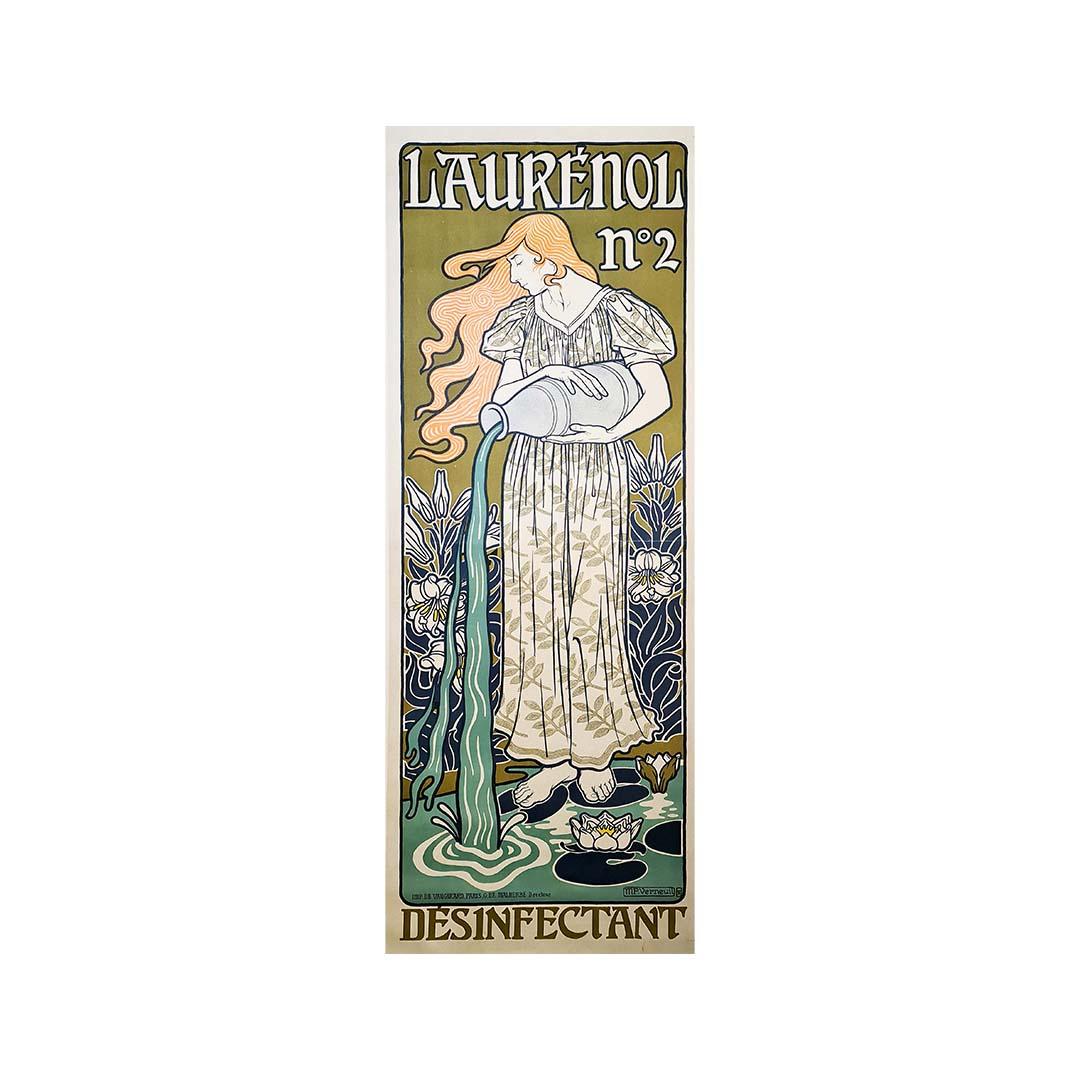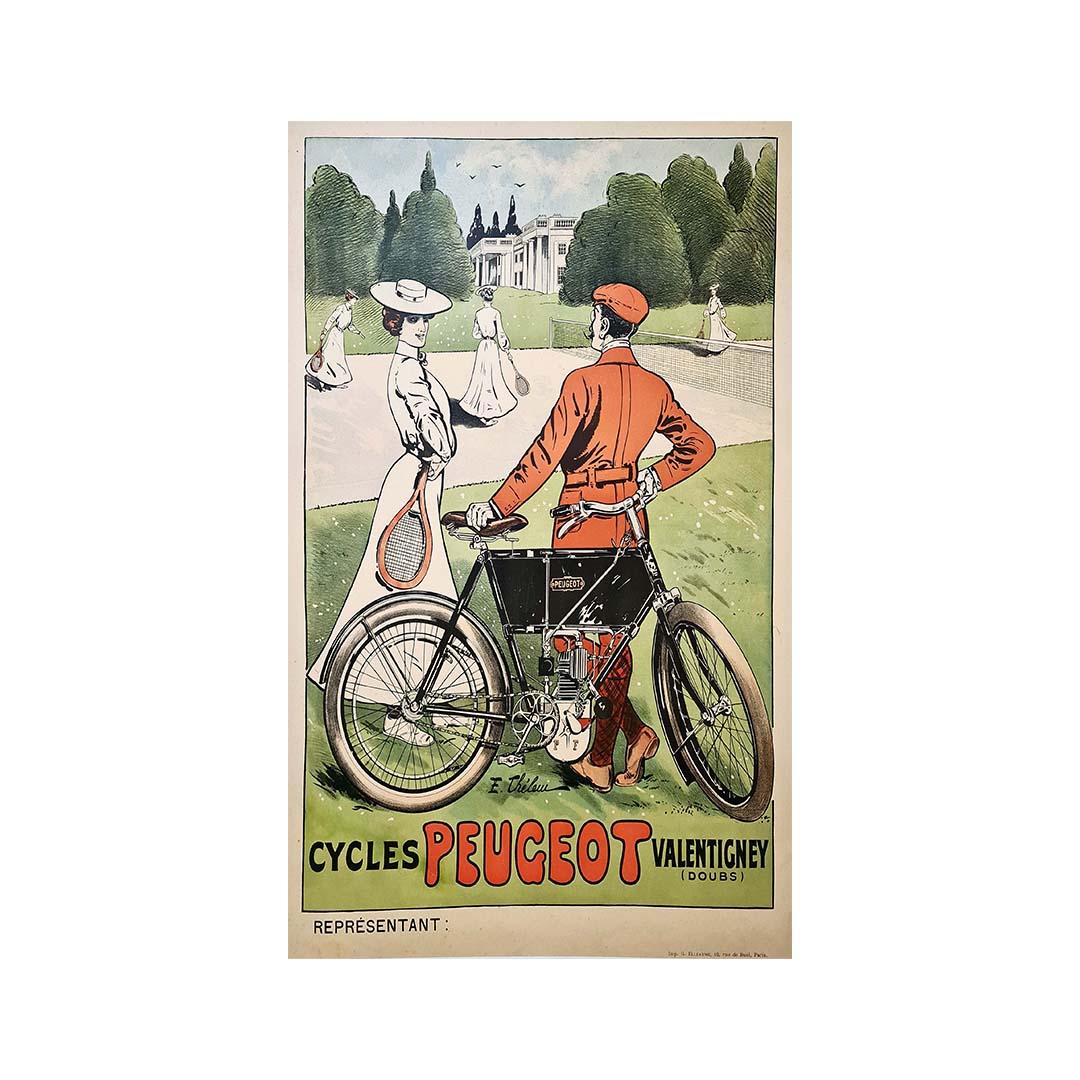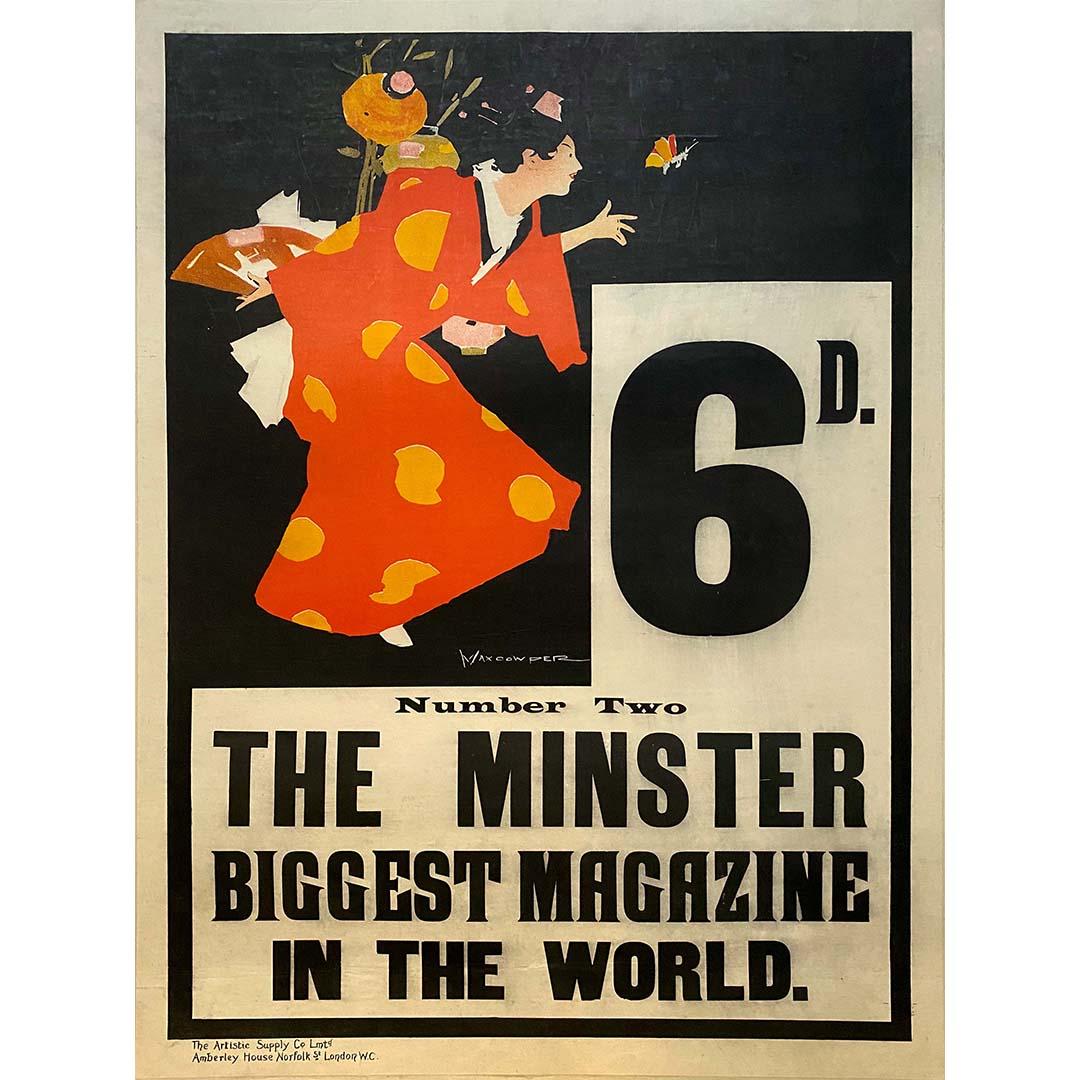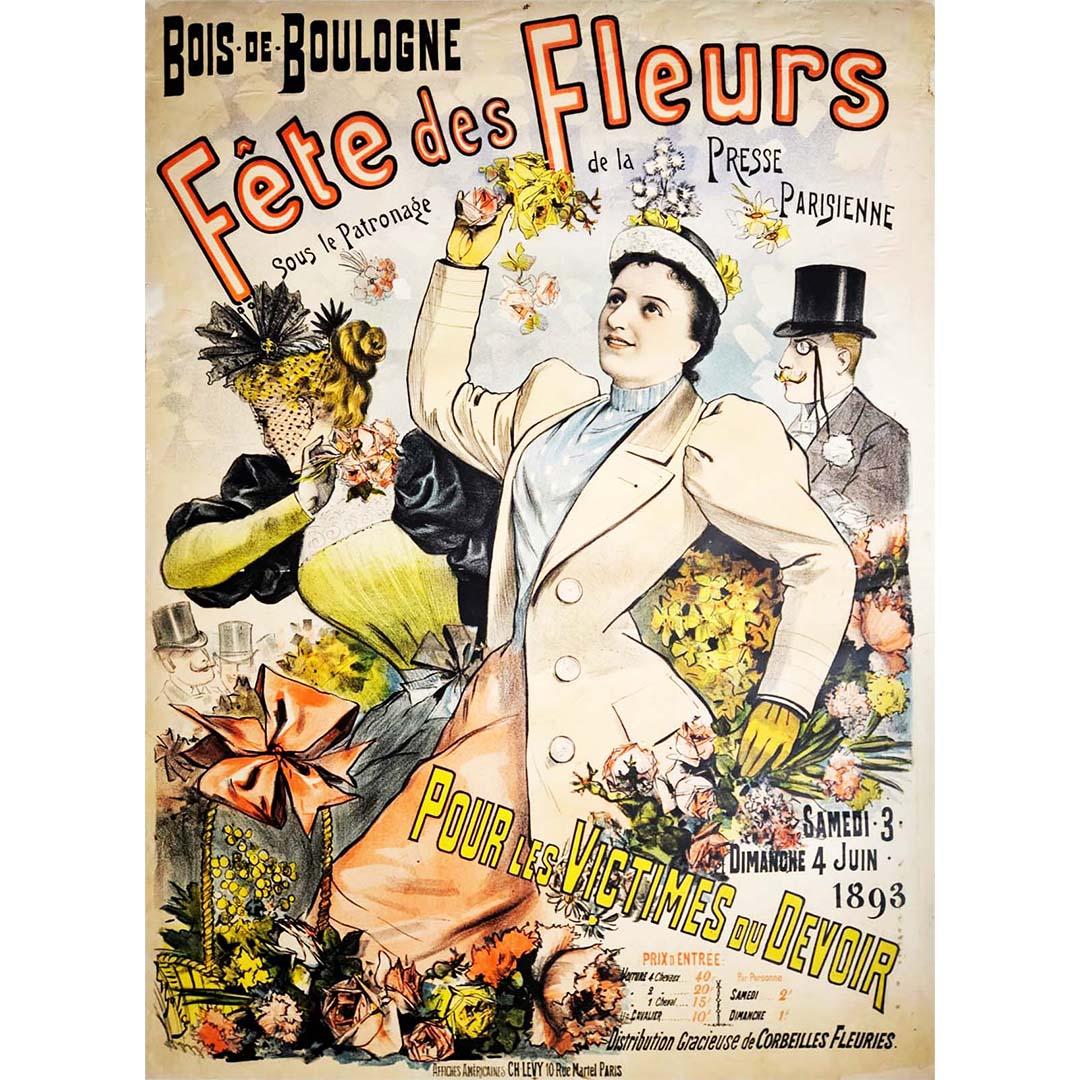Items Similar to 1899 Original Art Nouveau poster by Firmin Bouisset for the Salon des cent
Want more images or videos?
Request additional images or videos from the seller
1 of 8
Firmin Bouisset 1899 Original Art Nouveau poster by Firmin Bouisset for the Salon des cent1899
1899
About the Item
Beautiful poster from 1899 to promote the Salon des cent (also called "Salon des 100" or "Salon de La Plume") which was a French art exhibition.
Conceived by Léon Deschamps, it was launched in Paris in 1894 in the hall of the magazine La Plume.
The idea was to exhibit and sell mainly prints and drawings, in association with a literary and artistic periodical. The last edition, the fifty-third, took place at the end of 1900.
Born in Moissac to a miller father, Firmin Bouisset began his career by illustrating numerous children's books which were extremely successful at the time, but it is through his posters that Firmin Bouisset is still known today.
Among his most emblematic works, we find the Little Menier writing on a wall and the little schoolboy of LU, which are still part of our advertising landscape but also of our heritage.
Bouisset was in his time the painter of childhood.
Note that he always took his children as models: Yvonne his daughter for the Menier chocolate or Jacques, his son, for the little LU.
Exhibition - Art Nouveau
Exposition d'ensemble
Chaix Paris
- Creator:Firmin Bouisset (1859 - 1925, French)
- Creation Year:1899
- Dimensions:Height: 24.41 in (62 cm)Width: 16.54 in (42 cm)
- Medium:
- Movement & Style:
- Period:
- Condition:Very good condition, on linen.
- Gallery Location:PARIS, FR
- Reference Number:1stDibs: LU1792211525792
About the Seller
5.0
Platinum Seller
These expertly vetted sellers are 1stDibs' most experienced sellers and are rated highest by our customers.
Established in 2021
1stDibs seller since 2022
84 sales on 1stDibs
Typical response time: 1 hour
- ShippingRetrieving quote...Ships From: PARIS, France
- Return PolicyA return for this item may be initiated within 14 days of delivery.
More From This SellerView All
- Circa 1900 Original Poster Paul Destez A la place Clichy - Art Nouuveau FashionLocated in PARIS, FRNice original poster of the begining of the 20th century by Paul Destez. This charming winter scene shows a fashionable woman perfectly comfortable in the cold, thanks to her newly p...Category
Early 1900s Art Nouveau Prints and Multiples
MaterialsLinen, Paper, Lithograph
- 1898 Original Poster - Laurénol N°2 Désinfectant - Art Nouveau - AdvertisingBy Maurice Pillard VerneuilLocated in PARIS, FRVery nice original poster from 1898 by Maurice Pillard Verneuil. Standing on dark blue water lilies, a pretty woman with flowing orange hair pours water from a gray jug. The essence ...Category
1890s Art Nouveau Prints and Multiples
MaterialsLinen, Paper, Lithograph
- Cycles Peugeot Valentigney ( Doubs ) Circa 1900 - Original Poster - Art NouveauLocated in PARIS, FRVery beautiful poster of Thelem (Ernest BARTHÉLEMY LEM, 1869-1930) for the Peugeot cycles. The Peugeot family began its rise to industrial power with the discovery of iron in the Do...Category
Early 20th Century Art Nouveau Prints and Multiples
MaterialsLinen, Paper, Lithograph
- C. 1900 Original Poster The Minster biggest magazine in the world by Max CowperBy Max CowperLocated in PARIS, FRMax Cowper 🏴(1860-1911) was a Dundee born painter. He was employed as an illustrator for the Dundee Courier before moving to London around 1901 to join the staff of the ...Category
Early 1900s Art Nouveau Prints and Multiples
MaterialsLinen, Paper, Lithograph
- 1893 Original poster by Louis Galice for the Bois de Boulogne flower festivalLocated in PARIS, FRBeautiful poster by Louis Galice for the Bois de Boulogne flower festival for the victims of duty. Louis Galice was an excellent draughtsman, as well as a highly talented illustrator...Category
1890s Art Nouveau Prints and Multiples
MaterialsLinen, Paper, Lithograph
- 1892 Original poster by Eugène Grasset - Chocolat Mexicain Masson ParisBy Eugène GrassetLocated in PARIS, FRMasson was a Parisian chocolatier who relied heavily on the Art Nouveau style to promote his products. His two favorite artists were Mucha and Grasset. "The Mexican Bandit," as this ...Category
1890s Art Nouveau Prints and Multiples
MaterialsLinen, Paper, Lithograph
You May Also Like
- Portrait of Philip Andreevich Malavin.1879.Paper, lithography, 32x23 cm with defBy Leon BakstLocated in Riga, LVPortrait of Philip Andreevich Malavin.1879.Paper, lithography, 32x23 cm with minor defects. Leon Bakst. (1866-1924)Category
1870s Art Nouveau Portrait Prints
MaterialsLithograph, Paper
- Henri de Toulouse-Lautrec "La Revue Blanche" limited edition lithographBy Henri de Toulouse-LautrecLocated in Boca Raton, FLLimited edition lithograph on Arches paper from edition of 2,000 of "La Revue Blanche" by Henri de Toulouse-Lautrec. Reproduction reissued in 1974. Th...Category
1970s Art Nouveau Figurative Prints
MaterialsPaper, Lithograph
- Alcazar d'hiverLocated in Greenwich, CTAlcazar d'Hiver is an 1896 chromolithograph of Choubrac's brilliant poster, printed at Imprimerie Chaix under the direction Ernest Maindron and G. Boudet for the lauded poster collec...Category
Late 19th Century Art Nouveau Prints and Multiples
MaterialsLithograph, Paper
- Cirage Jacquot et CieBy Lucien LefevreLocated in Greenwich, CTCirage Jacquot et Cie is an 1886 chromolithograph of Lucien Lefèvre's delightful poster, printed at Imprimerie Chaix under the direction Ernest Maindron...Category
Late 19th Century Art Nouveau Prints and Multiples
MaterialsLithograph, Paper
- Le CénacleBy Victor MignotLocated in Greenwich, CTLe Cenacle is an 1897 chromolithograph of Victor Mignot's poster, printed at Imprimerie Chaix under the direction Ernest Maindron and G. Boudet for the lauded poster collection 'Les ...Category
Late 19th Century Art Nouveau Prints and Multiples
MaterialsLithograph, Paper
- Fromme's Kalender Art Nouveau Lithograph Poster Koloman Moser Vienna SecessionBy Koloman MoserLocated in Chicago, ILLithograph printed by Albert Berger, Vienna. This design "was considered very advanced in 1899, with its large scale portrayal of the motif and the almost complete renunciation of interior drawing. The silhouette of the body is in mysterious contrast to the realistically portrayed head and hands. The unwavering gaze of the woman underlines the symbolism of the design: the Norn [ancient Norse goddess of fate] with the hour-glass and snake-ring embodies the eternal circle of life and the running out of time" (Vienna Secession, Denscher, p. 45). As the poster was originally used in 1899, the waning sand in the hourglass quite naturally can be assumed to be the coming of the end of the century. KOLOMAN MOSER: Instead of applying his flair and art education to paintings, Koloman Moser embodied the idea of Gesamt Kunstwerk (all-embracing art work) by designing architecture, furniture, jewelry, graphics, and tapestries meant to coordinate every detail of an environment. His work transcended the imitative decorative arts of earlier eras and helped to define Modernism for generations to come. Moser achieved a remarkable balance between intellectual structure (often geometric) and hedonistic luxury. Collaborating with Gustav Klimt and Josef Hoffmann, the artist was an editor and active contributor to Ver Sacrum, (Sacred Spring), the journal of the Viennese Secession that was so prized for its aesthetics and high quality production that it was considered a work of art. The magazine featured drawings and designs in the Jugendstil (Youth Style) along with literary contributions from distinguished writers from across Europe. It quickly disseminated both the spirit and the style of the Secession. In 1903 Moser and Hoffmann founded and led the Wiener Werkstatte (Viennese Workshop) a collective of artisans that produced elegant decorative arts items, not as industrial prototypes but for the purpose of sale to the public. The plan, as idealistic then as now, was to elevate the lives of consumers by means of beautiful and useful interior surroundings. Moser’s influence has endured throughout the century. His design sensibility is evident from the mid-century modern furniture of the 1950s and ‘60s to the psychedelic rock posters...Category
1890s Art Nouveau Figurative Prints
MaterialsPaper, Lithograph
Recently Viewed
View AllMore Ways To Browse
Antique Original Art
Original Art Nouveau
Art Nouveau Original Art
Art Nouveau 1890
Paris Art Nouveau
Antique Wall Art Art Prints
Art Exhibit Poster
Art Nouveau Posters
Art Nouveau Poster Art
Childrens Art Posters
Exhibit Poster Prints
French Art Nouveau Posters
Art Nouveau Poster Art Of France
Antique Art Nouveau Prints
Art Nouveau Lithograph
Antique Linen Paper
Paris Art Exhibit Poster
Art Nouveau Prints And Posters





